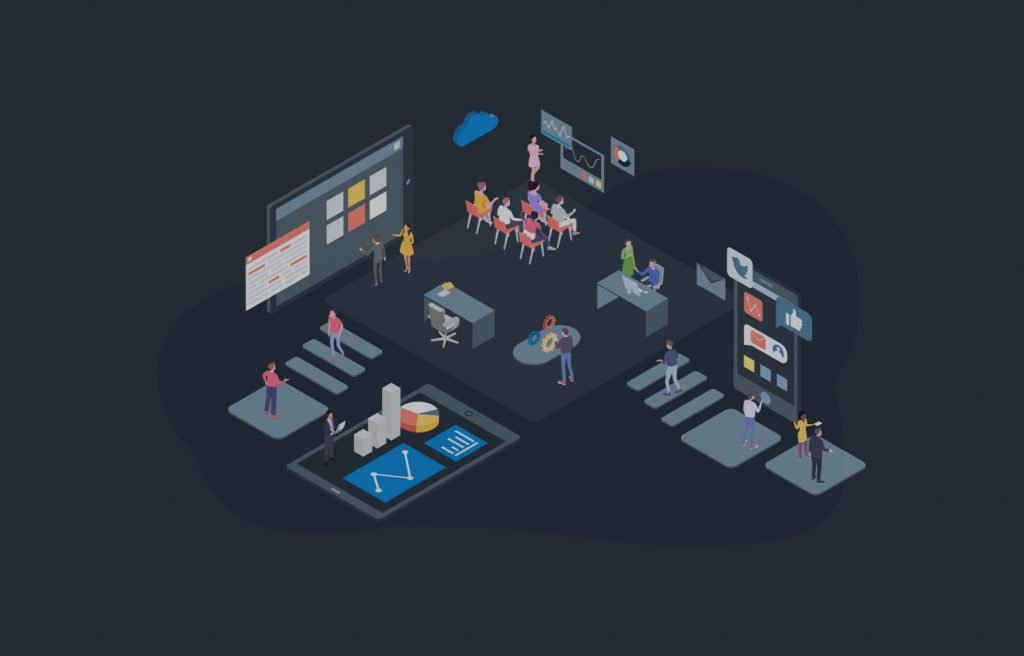
Companies across the world are realizing how important custom software is to the modern business. E-commerce stores, in particular, have turned to mobile apps to maintain customer engagement and increase sales, with many businesses now seeing their customers spend more time on their mobile apps than on desktop websites.
In addition, companies of all sizes are developing enterprise cloud software and other applications for internal use. Because of the intense pressure to produce high-quality apps quickly, many of these businesses have turned to IT staff augmentation to rapidly scale their staff and bring software to market.
The growth of new managed service providers and IT reselling companies to meet this demand has caused predictable growing pains. This article will help executives in the staff augmentation industry identify common roadblocks, proactively implement solutions, and ensure that their clients remain happy.
Why Staff Augmentation?
Modern companies typically keep lean IT departments that are capable of maintaining their existing infrastructure, responding to employee queries, and performing basic updates to the system.
However, more difficult tasks such as developing custom software or mobile applications from scratch are often beyond the grasp of tech generalists.
Managed service providers allow clients rapidly scale their capabilities and execute complex development projects without a long-term salary commitment. They also make it much easier to access the type of hyper-specialized engineers and cybersecurity experts that are needed during key portions of the development cycle.
While software managed services can be a tremendous resource for companies, staff augmentation arrangements come with their own unique set of challenges. Common problems include a communication barrier, time zone issues, mismatched expectations, issues with the quality of service, and a failure to cultivate institutional knowledge.
This guide will look at each of the five most common staff augmentation challenges and help outsourcing partners set their clients up for success.
Communication Barrier
Challenge
Perhaps the most commonly cited challenge associated with working with an IT managed service is the communication barrier. Most traditional outsourcing companies are located in South and East Asia, where the workforce is cheap and talented, but frequently struggles to communicate effectively in English.
This communication barrier can lead to mismatched expectations and dissatisfaction with the final product. However, by doing their due diligence and selecting the right outsourcing partner, companies can ensure that their next software development project is completed without a hitch.
Solution
The best way to avoid communication problems with clients is to set up a solid communication plan from the start. Make sure that your communication protocol and commitments are laid out in writing in order to avoid surprises down the line.
In particular, your company should commit to responding to emails and phone calls within a certain time frame and designate a single point of contact that is responsible for resolving concerns. Lastly, thoroughly test employees for their English language and professional communication skills to ensure that they can work seamlessly with Western clients.
Time Zone Issues
Challenge
Another common challenge encountered with staff augmentation is the time zone issue. While most outsourcing clients are located in the United States or Western Europe, most staff augmentation companies are located on the other side of the world.
This presents a major challenge when augmented staff needs to be active and working at the same time as their American counterparts, since 9:00 am Monday morning in Silicon Valley is the equivalent to 9:30 pm in Mumbai, India. Some Asian outsourcing companies provide augmented workers that work during American business hours, but this night shift does not always attract the top talent.
Solution
One of the easiest ways to stand out as a managed service provider is to employ workers that are located in the Western Hemisphere. This includes software developers located in North, Central, and South America.
Doing so will allow your workers to keep normal business hours and work at the same time as their American counterparts. This will improve communication and streamline the development process.
Mismatched Expectations
Challenge
The software development cycle is a daunting process. Managers spend months, or even years, conceptualizing the software, putting the right team in place, and then developing and testing the software relentlessly until the final product meets all end-user demands. The sheer amount of work involved in the process is why failure is such a disheartening possibility.
Yet, many executives find themselves facing failure after their first outsourcing venture because of mismatched expectations–meaning that the client and their augmented staff have very different ideas about how the end product should look and function.
This can lead to disappointment when the software does not meet stakeholder expectations and is why it is so vital that executives complete their due diligence before signing a contract and investing time and resources into a software development project.
Solution
The most important step in any outsourcing arrangement is setting clear expectations from the very beginning. Managers should thoroughly research potential companies, paying special attention to their past record, client feedback, and communication record.
Once an outsourcing partner has been identified, it is important to clearly document–in writing–the communication schedule, response deadlines, and parameters of the project. No detail should be spared and every single task should be accounted for.
In addition, the best staff augmentation companies will over-communicate in the early stages of the process since this helps to ensure that they are on the right track and set up for success.
Quality of Service
Challenge
The biggest fear of any company when hiring a freelancer or IT staffing service is that the contractor’s work will fail to meet standards. That’s why quality of service should be the biggest concern for executives searching for an outsourcing partner.
A single poor programmer can lead to thousands of lines of incorrect code, project delays, cost overruns, and major security vulnerabilities for the end user. Managers who focus on costs savings over other qualifications typically encounter this problem, but there are easy ways to avoid that troubled route.
Solution
Companies that perform their due diligence and thoroughly research potential staff augmentation companies typically succeed in their software development goals.
By researching and finding feedback from these companies’ past clients, managers can ensure that their augmented engineering staff is highly educated and able to complete their assigned task. In particular, managers should solicit feedback from their personal network, professional contacts, and through internet research.
Only outsource vital development tasks once the quality of an outsourcing service has been verified.
Lack of Institutional Memory
Challenge
Recent research by Deloitte found that 43% of Millennials expect to leave their job within the next two years, with an estimated 61% of Generation Z expected to do the same.
The high turnover rate among young workers, combined with business’s increased use of IT staff augmentation services, means that companies are struggling to cultivate and maintain “institutional memory.”
Institutional memory is defined as “understanding the trends that have driven the business, a perspective on how the business has changed…[and] understanding why something didn’t work 10 years ago and what is different now” This knowledge is vital information for businesses hoping to use the lessons of the past to predict future success.
Solution
One of the best ways that companies can cultivate institutional memory while dealing with high turnover and augmented workers is by putting in place a set of steps that ensures that vital data is stored for future use. The first step in this process is creating a clear strategy that outlines the reasons for maintaining this information, the type of information that is to be stored, and the way this data will be preserved for future managers.
In addition, each employee (whether permanent or a contractor) should periodically provide a list of their responsibilities so that crucial tasks are not neglected once someone leaves. Managers can collect this information from their staff as part of the performance review process.
Customer relationship management (CRM) systems provide a great example for tech managers in this respect. This class of software enables companies to keep track of customer purchases, past interactions, and other important details which help these businesses maintain customer relationship even as key employees leave for other opportunities. Savvy companies are beginning to build similar software to keep track of employee responsibilities.
Finally, every aspect of their role should be recorded for posterity, including detailed instructions on how to complete day-to-day tasks. An exit interview for departing employees is the last step in the process and ensures that any previous oversights are corrected before the employee–and their knowledge–is lost forever.
Conclusion
IT staff augmentation is a wonderful resource for businesses interested in developing custom software destined for their customers and for internal use. However, it is important that executives complete their due diligence before signing a contract with a staffing provider. A subpar IT staffing partner can lead to frustration and an end product that no one likes.
Before selecting a staff augmentation company, it is important to verify the technical and English language skills of their software engineers–and to make sure that both parties have the same expectations. In addition, managers should ensure that their company is prepared to document and retain the technical knowledge produced by contractors for the length of the partnership. These steps will help ensure that the software development project is set up for success.
This is an article provided by our partners network. It does not reflect the views or opinions of our editorial team and management.
Contributed content

Founder Dinis Guarda
IntelligentHQ Your New Business Network.
IntelligentHQ is a Business network and an expert source for finance, capital markets and intelligence for thousands of global business professionals, startups, and companies.
We exist at the point of intersection between technology, social media, finance and innovation.
IntelligentHQ leverages innovation and scale of social digital technology, analytics, news, and distribution to create an unparalleled, full digital medium and social business networks spectrum.
IntelligentHQ is working hard, to become a trusted, and indispensable source of business news and analytics, within financial services and its associated supply chains and ecosystems










